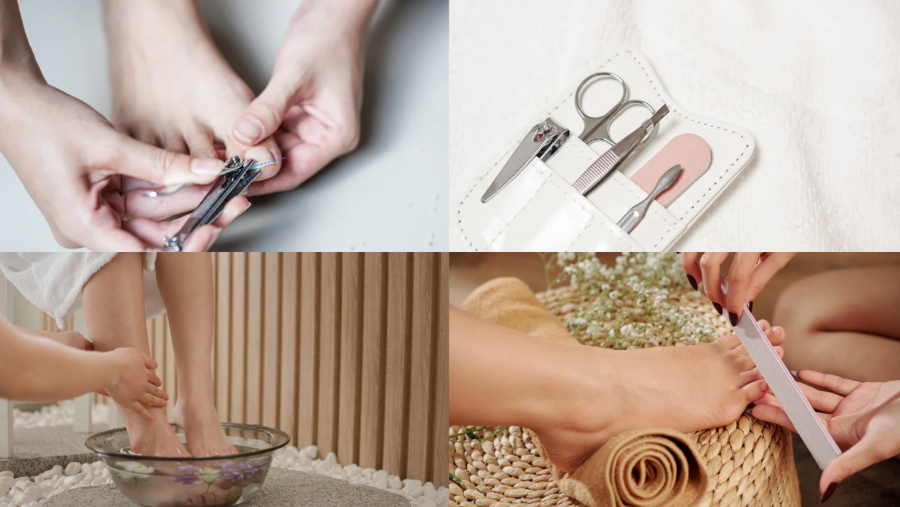Toenail care might seem like one of the simplest personal grooming habits, but there’s more to it than meets the eye. Many people don’t realize that trimming toenails incorrectly can set the stage for discomfort and even medical complications. A common question that arises is: what happens if you cut your toenails too short?
While it may appear harmless at first, overly short cuts can damage the nail bed, trigger painful ingrown toenails, and leave your toes vulnerable to infection. In this article, we’ll explore the consequences of trimming too aggressively, how to recognize early warning signs, and the best practices for safe, healthy toenail care.
Why Toenail Length Matters
Toenails serve as protective shields for the sensitive skin and tissues beneath them. When they are cut to the right length, they reduce the risk of injury and help maintain balance while walking. But when trimmed too short, the nail loses its protective function. Instead of serving as a barrier, it creates an entry point for bacteria, fungi, and irritation.
What Happens If You Cut Your Toenails Too Short?
Cutting toenails too short can lead to several painful and inconvenient problems:
1. Ingrown Toenails
Perhaps the most common outcome of overly short trimming is an ingrown toenail. When the edge of the nail curves into the skin, it creates pressure and inflammation.
Typical symptoms include:
- Pain along the sides of the nail
- Redness and swelling
- Tenderness when walking or wearing shoes
- In some cases, drainage or infection
Left untreated, ingrown toenails can become severely infected, requiring medical intervention.
2. Infections
Another risk of trimming too closely is infection. By exposing the delicate nail bed, bacteria or fungi can invade.
Warning signs of infection:
- Persistent redness
- Swelling around the nail
- Warmth and throbbing pain
- Pus or foul odor
People with diabetes or circulation problems should be especially cautious, as infections can escalate quickly and become serious.
3. Nail Bed Injury
The nail bed is highly sensitive. If the nail is cut too close, the bed can become irritated or injured, which often results in sharp pain when pressure is applied to the toe. In severe cases, it may lead to abnormal nail regrowth.
4. Abnormal Nail Growth
Improper trimming can change the way your toenails grow. Instead of extending outward naturally, nails may thicken, curl, or grow into the surrounding tissue—further increasing the risk of recurrent ingrown toenails.
5. Sensitivity and Pain
Even without an infection or injury, overly short toenails can expose nerve endings, making toes more sensitive to pressure, shoes, or even light impact.
Safe Toenail Trimming Practices
Understanding what happens if you cut your toenails too short is the first step. The next is learning how to avoid these problems through proper trimming techniques.
Best practices include:
- Cut straight across: Avoid rounding the corners, as this encourages ingrown nails.
- Leave a small edge: Toenails should align with the tip of your toe, with a sliver of “white” still visible.
- Use the right tools: Invest in sharp, clean nail clippers designed for toenails.
- Trim after bathing: Nails are softer and easier to cut after soaking in warm water.
- Smooth edges with a file: Prevent snags on socks or shoes by filing after trimming.
- Never dig into corners: This is a leading cause of ingrown toenails.

What to Do If You Trimmed Too Short
If you’ve already cut your toenails too short and are dealing with discomfort, here are steps to protect your toes while they heal:
- Clean the area gently with mild soap and warm water.
- Apply an antiseptic or antibiotic ointment to reduce infection risk.
- Cover with a sterile bandage if shoes cause friction.
- Avoid tight footwear until the nail grows back.
- Monitor closely for signs of infection such as redness, swelling, or pus.
When to See a Podiatrist
Sometimes self-care isn’t enough. You should seek podiatric care if:
- Ingrown toenails keep recurring
- You notice signs of infection
- You have diabetes, neuropathy, or vascular disease
- Nail pain interferes with walking or daily activities
A podiatrist can not only treat existing problems but also provide safe, professional trimming that prevents future complications.
Related Reading: Nail Care and Prevention
Toenail trimming is just one part of comprehensive foot care. For seniors especially, maintaining healthy nails requires consistency and sometimes professional support. To dive deeper into the subject, check out our guide:
Foot Nail Care in the Elderly: Safe Practices for Healthy Toenails
Final Thoughts: What Happens If You Cut Your Toenails Too Short?
So, what happens if you cut your toenails too short? The risks include ingrown toenails, infections, nail bed injuries, abnormal regrowth, and unnecessary pain. While trimming may seem simple, improper technique can lead to ongoing problems.
By following safe practices and seeking podiatric care when needed, you can protect your feet and maintain healthy toenails for the long term.
Professional Toenail Care at Home
Toenail care doesn’t need to be stressful or risky. Allevio Care Anywhere offers professional podiatry services delivered directly in your home or care facility. From safe nail trimming to fungal treatment and diabetic foot exams, we help patients across Greater Houston, Utah, Outhern Idaho, and Nebraska keep their feet healthy and pain-free.






